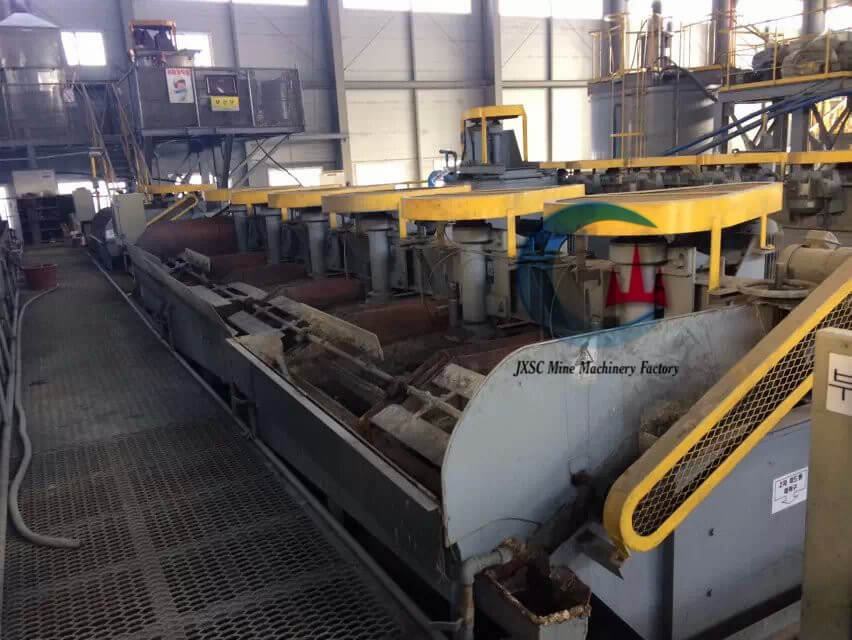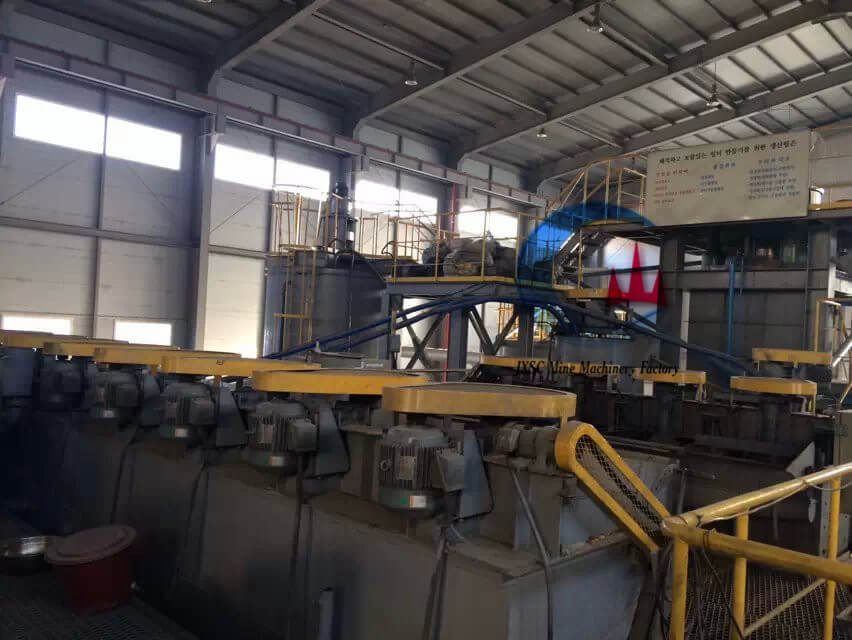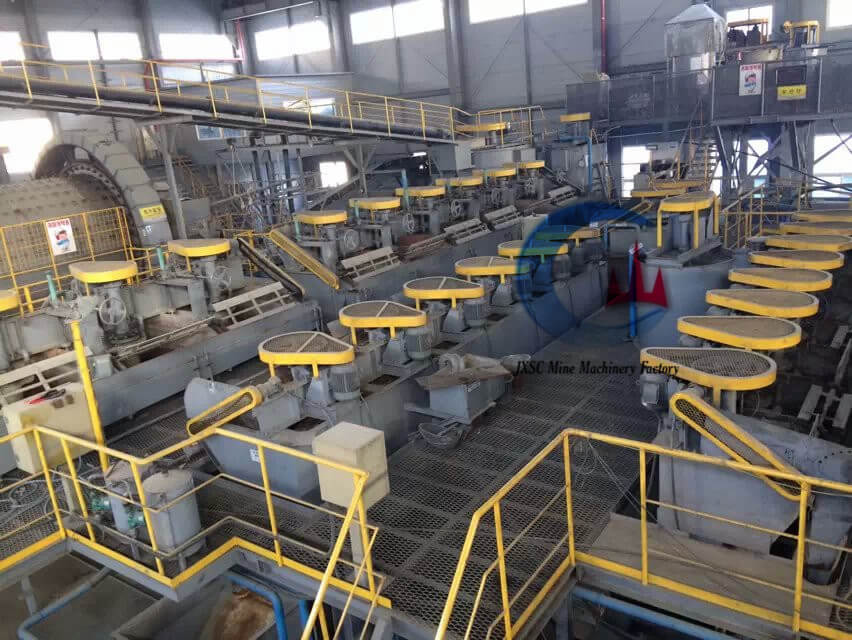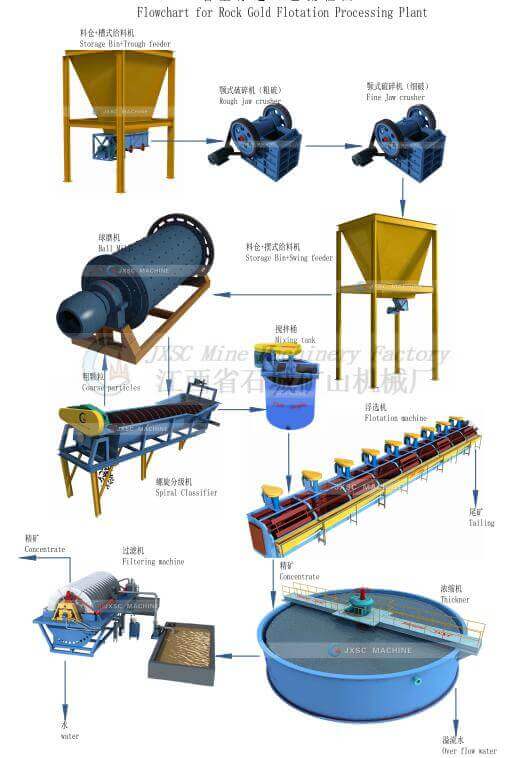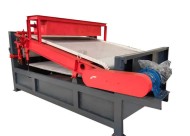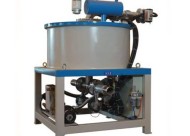Gold flotation
The Froth Flotation Method is means separating minerals according to their different physical and chemical properties. According to classification, the flotability of gold and silver minerals is included in the first category of natural and non-ferrous heavy metal sulfides, characterized by low surface wettability and easy flotation, which can be flotation by xanthate collectors.
The froth flotation method is widely used to treat various veins of gold and silver ores for the following reasons:
(1) In most cases, the froth flotation process can enrich gold and silver in sulfide concentrate to the greatest extent and discard a large number of tailings, thus reducing the smelting cost.
(2) When the flotation machine is used to treat polymetallic gold and silver ores, concentrates containing gold, silver and non-ferrous heavy metals can be effectively separated, which is conducive to the comprehensive utilization of valuable mineral resources.
(3) For refractory gold and silver ores which cannot be treated directly by mercury amalgamation or cyanidation, a combined process including flotation is needed. However, there are some limitations in flotation, such as ores with gold particles larger than 0.2-0.3 mm or pure quartz gold ores without metal sulfides, which are difficult to deal with by flotation separation alone.
This paper introduces commonly used reagents and the flotation process of gold and silver ore for you.
You may interest in
1. Where to buy flotation machine
2. 7 Factors Affecting Froth Flotation






